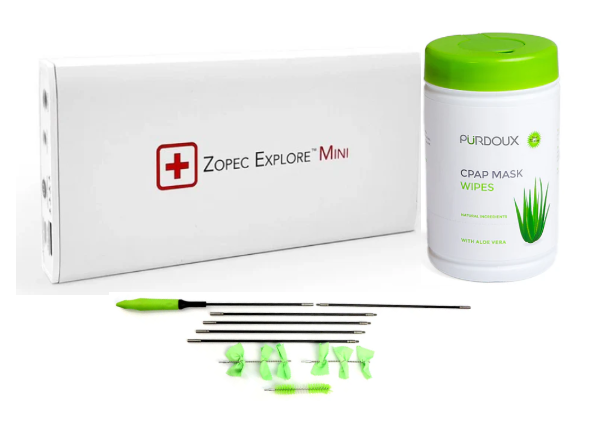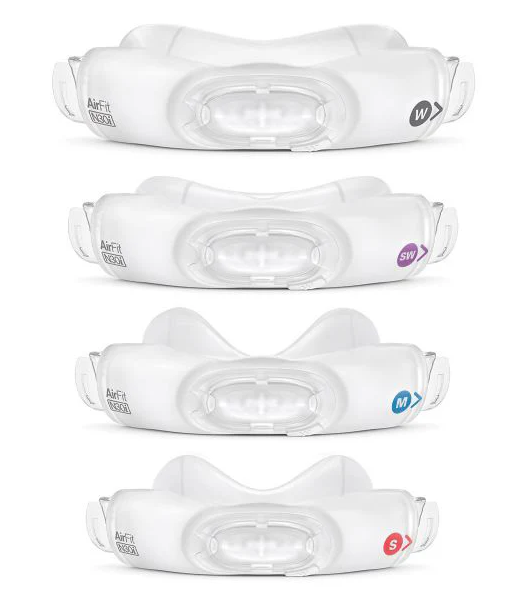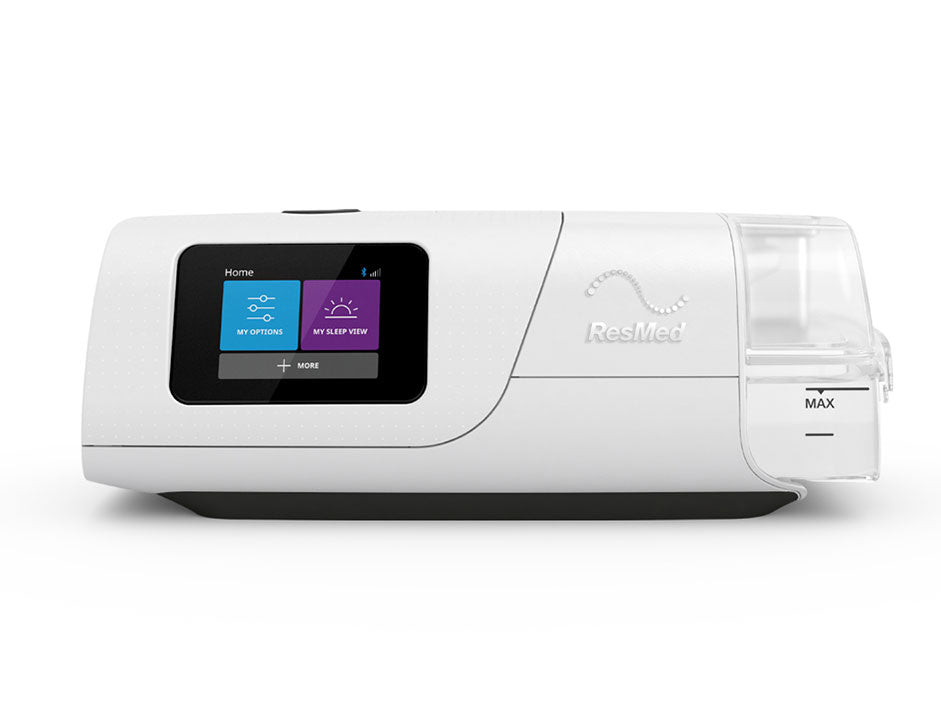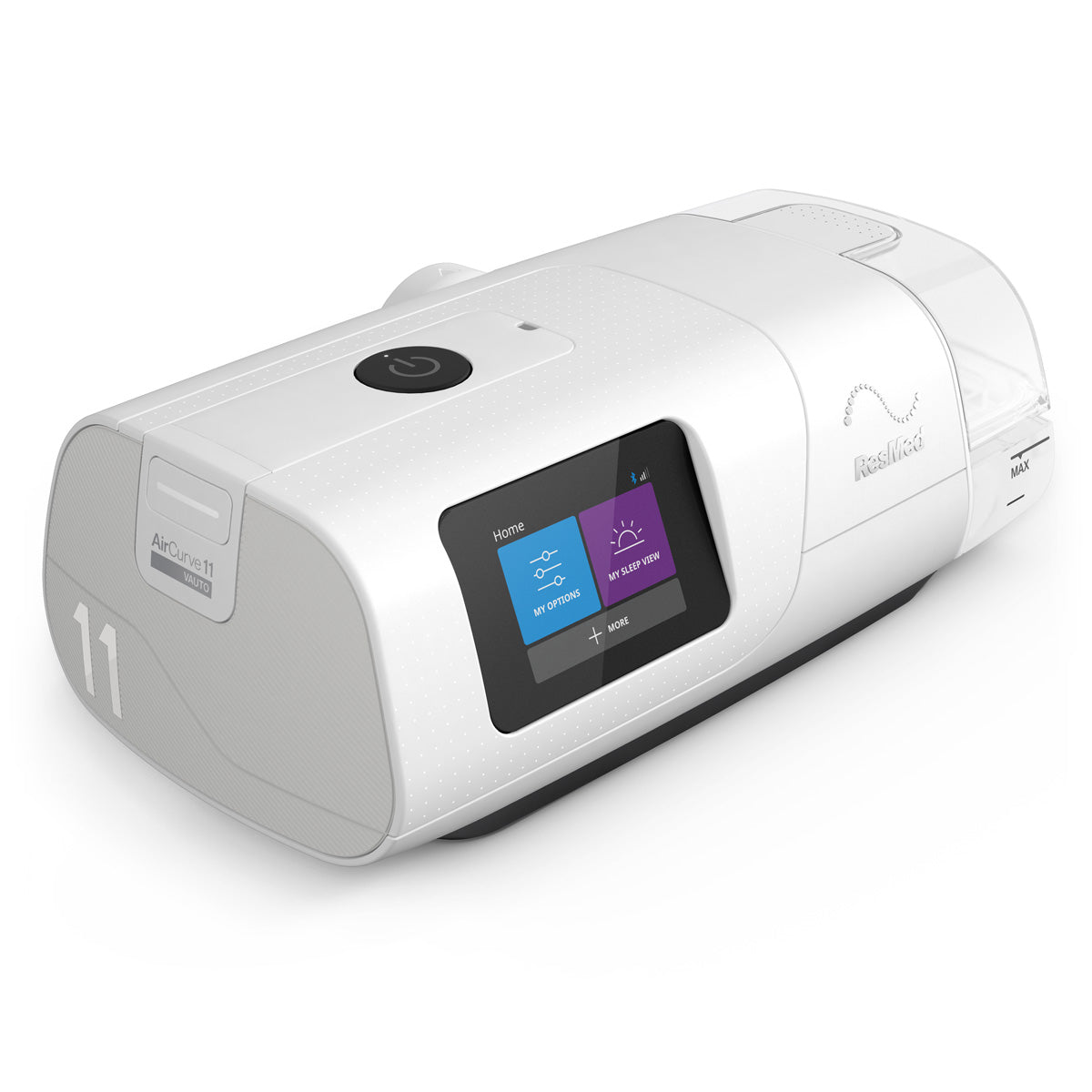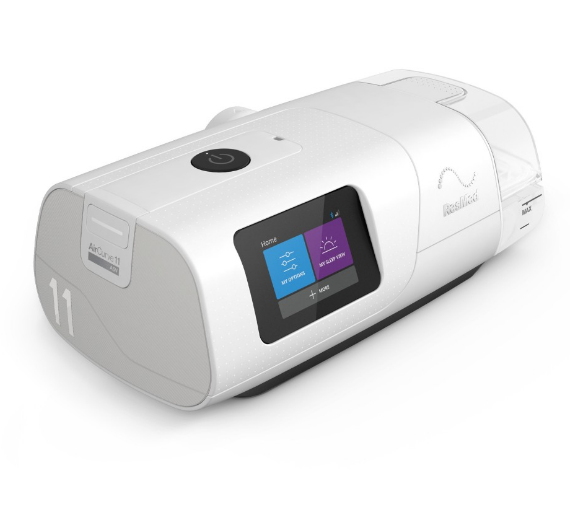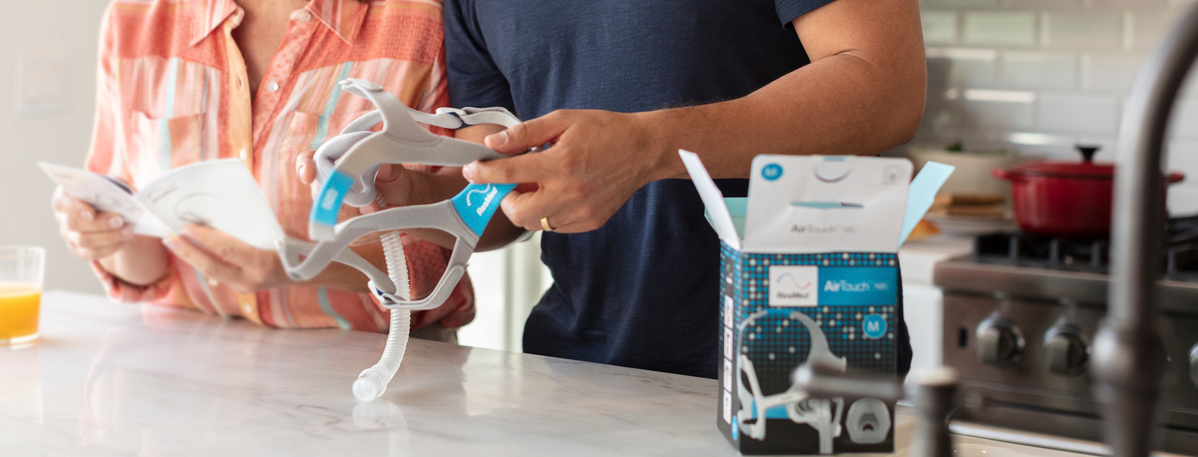Filters
Need help?
Frequently Asked Questions
What is the difference between CPAP, APAP and BiPAP?
There are three main types of positive airway pressure therapy. All three types of machines treat the symptoms of sleep apnea using pressurized air to keep airways open during sleep. The difference lies in how they deliver pressure into airways and their level of adjustability. Determining which one is right for you depends on your specific condition and your doctor’s recommendation.
Continuous Positive Airway Pressure (CPAP)
CPAP machines provide a continuous flow of air that pushes into your upper airway and lungs through a mask that covers your nose, mouth, or both. This pressure helps hold your airway open, keeping it from narrowing or collapsing, which prevents effective breathing during sleep.
Automatic Positive Airway Pressure (APAP)
APAP machine automatically adjusts positive airway pressure, it uses special technology to identify when a person snores or begins to experience a breathing disruption. Once it detects a change in breathing, the machine increases the air pressure to help keep the airway open. Similarly, the machine decreases the rate of pressure when it detects that a higher rate is no longer needed.
Bilevel, or Variable Positive Airway Pressure
(BiPAP/VPAP)
BiPAP machines can be set to different pressures for inhalation and exhalation. This can make it easier to breathe out against the incoming air and can be particularly helpful for people with certain conditions. This added capability makes BiPAP machines more expensive. BiPAP is generally used for more complex or advanced sleep apnea treatments, including cases involving higher-pressure settings, combined central sleep apnea and obstructive sleep apnea (OSA), or conditions like chronic obstructive pulmonary disease (COPD).
Is a prescription required to purchase a BiPAP machine?
Yes, a prescription is required. It must include the specific pressure settings recommended by your physician, based on your sleep study. These settings are programmed into the machine before shipping to ensure it’s tailored to your needs. What are BiPAP settings?
BiPAP machines use two pressure levels:
IPAP(Inspiratory Positive Airway Pressure): Higher pressure when you inhale.
EPAP(Expiratory Positive Airway Pressure): Lower pressure when you exhale.
Your doctor determines these settings to provide the right level of support for your breathing.
What is a normal number of events per hour on BiPAP?
A normal number is fewer than 5 events per hour, measured by something called the Apnea-Hypopnea Index (AHI). This number reflects how many times per hour you either stop breathing (apnea) or have shallow breathing (hypopnea) during sleep.
Sleep apnea severity is typically classified by AHI as follows:
Mild: 5–15 events per hour
Moderate: 15–30 events per hour
Severe: 30 or more events per hour
If your AHI stays above 5 while using BiPAP, or you still feel tired during the day, it's a good idea to check in with your doctor. They may want to adjust your therapy or check for other issues like mask leaks or improper settings.
How can a BiPAP machine improve sleep?
A BiPAP machine improves sleep by supporting more natural, comfortable breathing. It delivers two distinct pressure levels—higher when you inhale (IPAP) and lower when you exhale (EPAP)—which makes it easier to breathe and keeps your airway open all night. This helps reduce sleep disruptions caused by apneas (breathing pauses) and hypopneas (shallow breathing).
Compared to APAP (Auto-Adjusting CPAP), BiPAP is often recommended for people who:
- Need higher pressure settings that are difficult to tolerate on a single-pressure machine
- Have central or complex sleep apnea, not just obstructive
- Struggle with exhaling against pressure on APAP or CPAP
- Have other breathing conditions like COPD, neuromuscular disorders, or obesity hypoventilation syndrome
By improving oxygen levels, reducing breathing effort, and supporting uninterrupted sleep, BiPAP can help you wake up feeling more rested, alert, and energized.
What masks are compatible with BiPAP machines?
Masks are universally designed to fit all CPAP and BiPAP machines, regardless of the manufacturer. Most masks use a standard 22mm connector, ensuring they work with any machine that features a similar connection. This makes it easy to find a mask that suits your comfort and therapy needs, no matter the brand of your BiPAP machine.
Can I travel with a BiPAP machine?
Yes, you can travel with your BiPAP machine! It's important to remember not to take any days off from your therapy, as consistent use is key to managing your sleep apnea. All machines displayed on our website are designed to operate worldwide. The universal power supply is rated from 100-240 V, 50-60 Hz, and can be used without a voltage converter. However, an international plug adaptor may be required to make your power cord compatible with the power outlets in the country you're visiting. Be sure to pack your machine and accessories in a protective case and consider carrying a backup power source for added convenience.
How often should I replace my BiPAP accessories?
Following the manufacturer’s guidelines for replacing BiPAP accessories helps maintain the effectiveness of your therapy and ensures a hygienic sleep environment. Here are the general replacement recommendations:
- Complete Mask System: Every 6-12 months
- Silicone Mask Cushions (full face, nasal, and nasal pillows): Every 3-6 months
- Memory Foam Mask Cushions: Every month
- Humidifier Water Tub: Every 6-12 months
- Filters: Every month
- Tubing: Every 3-6 months
It’s important to regularly inspect your accessories for signs of wear and tear, and replace them as needed. Regular maintenance helps optimize your therapy and prolongs the life of your BiPAP machine.
How often should I clean my BiPAP accessories?
Regular cleaning of your BiPAP equipment is just as important as using it. Germs from your skin can transfer to the mask and hose, and dust, mold, or allergens can build up. Cleaning your BiPAP parts helps prevent harmful germs from growing. The warm, damp environment in the hose is perfect for bacteria and mold, which can cause infections like sinus issues or pneumonia if not cleaned. Below are the recommendations for cleaning each part:
Mask: To clean your BiPAP mask properly, start by disassembling it into three parts: the headgear, cushion, and frame. Clean the cushion daily and the headgear and frame weekly. In a sink or bowl, use mild liquid soap and warm water to gently wash each part, removing any oils. Rinse thoroughly with warm water, then place the cushion, headgear, and frame on a towel on a flat surface to air-dry, or hang the headgear and frame on a hook or hanger. Avoid exposing any parts to direct sunlight. As an alternative, you can use BiPAP mask wipes for daily cleaning of the cushion.
Water Chamber: Once a week, fill a sink or bowl with warm water and mild liquid soap. Disassemble your water chamber and soak it for a few minutes. Use a small brush or cloth to ensure all corners are thoroughly cleaned. Place the water chamber on a flat surface on top of a towel to dry, avoiding direct sunlight. If you have the cleanable version of the ResMed water chamber, it is dishwasher safe on the top rack. Each morning, any leftover water should be emptied, the chamber lightly rinsed, and then left to air dry. It is recommended to use distilled water only.
Hose: Once a week, fill a sink or bowl with warm water and mild liquid soap. Submerge your BiPAP hose and let it soak for a few minutes. Swish the soapy water through the hose several times, then rinse thoroughly with clean water. For a deeper clean, consider using a BiPAP hose brush. Hang the hose over a shower bar or similar rod while cleaning. Insert the brush into one end of the hose and carefully push it through to the other end. Move the brush back and forth a few times to remove any buildup. If it’s tricky at first, wet the bristles and add a small drop of soap to help the brush slide through more easily.To dry the hose, leave it hanging over the shower bar, allowing the water to drain out completely.
Filter: Filters for ResMed BiPAP machines are not washable and should be replaced monthly. Respironics BiPAP machines have both disposable and reusable filters. The disposable filter should be replaced monthly, while the reusable filter should be washed 1-2 times per week under running water. The disposable filter should be replaced every 6 months.
Device: To keep your BiPAP device clean, use a cloth to wipe away any dust as needed. A dry microfiber cloth is ideal, but if necessary, you can use a slightly damp cloth—just make sure it is only very mildly damp to prevent any water damage to the machine.
How often should I replace my BiPAP machine?
BiPAP machines typically have a lifespan of about 5 years, depending on usage and proper maintenance. Most machines come with a 3-year manufacturer's warranty in Canada. Regular maintenance and timely replacement of accessories can also help extend the life of your BiPAP machine. It is also recommended by physicians to have a sleep study repeated every 5 years to ensure that the pressure settings are still appropriate for your current needs. Changes in your condition over time may require adjustments to your therapy for optimal effectiveness.

